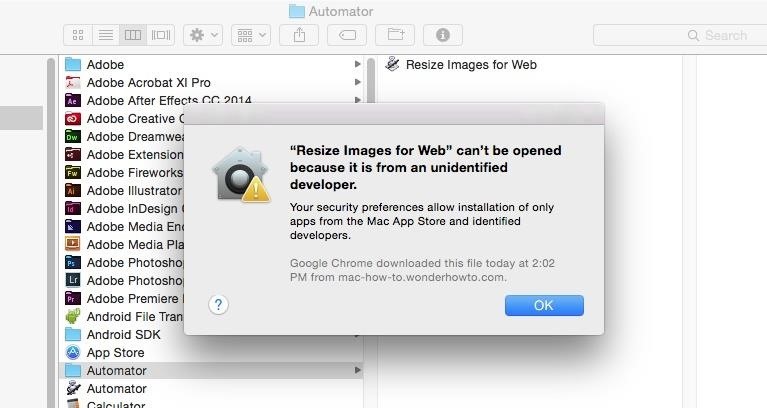OS X's command line and I have never been what I'd call 'friendly'; rather, we have a mutual respect and understanding about not messing with each other. (Well, as much of a mutual respect as one can have between a human being and a code window.) While the average person should never have any reason to visit Terminal, Apple's command line interface app actually does give you access to quite a few neat tricks and shortcuts. If you're willing to take a peek. What is Terminal? Apple's Terminal app is a direct interface to OS X's bash shell — part of its UNIX underpinnings. When you open it, Terminal presents you with a white text screen, logged in with your OS X user account by default. Here's the important part: With a system administrator account and password, you have direct access to tweaking almost everything about your computer's software code; that means that while this little window provides great power, it comes with great responsibility.
Oct 25, 2018 - iMyfone D-Back 6.6 Crack is a data recovery program moderated. IMyfone D-Back 6.6.0.12 License Key is an iOS device data recovery. IMyFone D-Back 6.6.0.12 crack + Serial Key For Mac. About Data Recovery. Best Iphone Data Recovery Expert Imyfone D-back Imyfone D-back Serials key. Jun 21, 2018 - iMyfone D-Back iPhone Data Recovery 6.6.0.12 With Crack [Latest!] By Guruji. IMyfone D-Back is an efficient iPhone data recovery software to rescue all your lost data under various tough. NetLimiter Pro 4.0.35.0 With Serial Keys [Latest!]. Mac Game's MacOS Software's Pc Software Uncategorized. Apr 6, 2018 - iMyFone D-Back 6.6.0.12 crack + Serial Key For Mac: imyfone d-back crack mac You can design certain parameters as well, for example you. Imyfone d-back 6.6.0.12 crack serial key for mac.
In short, be careful before using Terminal to execute commands, and make sure you understand what you're typing. You can also use Terminal to securely connect to other machines, web servers, and even create your own scripts, but those are how-tos for another day. For now, we're going to focus on using Terminal to explore your own computer. Basic Terminal commands you should know Before we get started with the fun stuff, let's learn some basic Terminal terminology and commands. These form the framework for more complex interactions (aka, the fun stuff). How to execute a Terminal command You can type something in the Terminal window until you're blue in the face, but it won't execute until you press the Return key on your keyboard. At that point, it will either return an error if you've typed something incorrectly, or the command will execute.
Open Terminal In Mac

Unless you're executing a command that requires the display of text in Terminal, you won't have any indicator that what you've done has been successful; you'll just get a new line with your user name on it once the command is finished processing. When writing commands and paths in Terminal, almost everything is case sensitive: This means that you need to remember to properly capitalize 'Dock' when referring to the Dock, or OS X won't understand your command. What's a path?
You can use Terminal to get direct access to your files without using the Finder. To do so, you build something called a path. Paths look similar in some ways to website sub-directories, and follow the structure of your folders. Paths take two forms: absolute paths and relative paths. An absolute path starts at the root level of your hard drive, and is displayed as '/'.
Follow these steps from the command line to install the AWS CLI using the bundled installer. Using the -b option to create a symlink eliminates the need to specify the. To upgrade to the latest version, run the installation command again. You can list every terminal command available by turning to the command line. What you’ll see is a significant list of terminal commands with over 1400 possible commands to investigate and use, many of which are either helpful or powerful as we regularly cover with our command line guides.
So if you wanted to make a path to your Applications folder, you would write '/Applications/'. Relative paths are defined based on where you've already navigated to, and represented by './'. For instance, if you go to the '/Applications/' folder in Terminal, that's your current working directory ( cwd). You can then get to your Utilities folder by typing './Utilities/' rather than '/Applications/Utilities'. When you first launch Terminal, you're starting in the current working directory of /Users/ myusername/ (also known as your User folder). How to display and move between files in Terminal To actually put all this path knowledge to use, you'll need the Terminal commands for displaying and changing files. Ls: The 'ls' command, by itself, displays the contents of the cwd.
So if I were just to type 'ls' in Terminal, it would display the contents of my user directory. You can add options to view more information about that directory. The options for 'ls' include: • -l, which lets you view the permissions of each file in the directory • -R, which will not only show each folder in the directory, but all their files, as well • -a, which will show any hidden files in the current directory cd: Where the 'ls' command lets you view a directory, the 'cd' command will actually move to that directory (change your cwd).

 0 kommentar(er)
0 kommentar(er)
